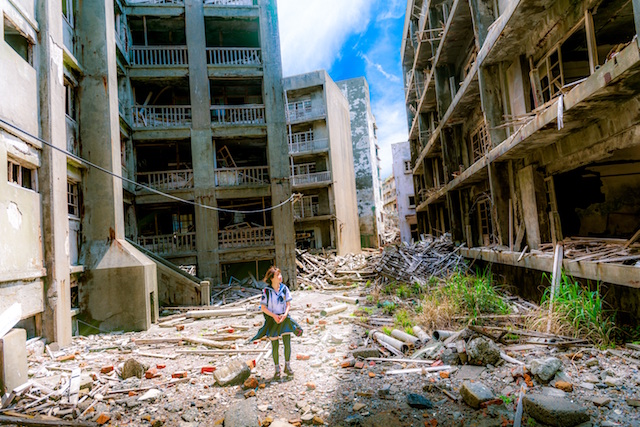Perhaps an hour had passed since the breaking newsflash announced 13 Sinhalese soldiers were killed by the Liberation Tigers of Tamil Eelam (LTTE). They wanted the Northern Peninsula of Sri Lanka to secede from the mainland. To achieve this end, they terrorized both Sinhalese and Tamils alike.
They were the echoes of our ancient fears made manifest.
Lingering memories of colonial oppression fueled a nationalistic fervor. Rising inequalities stoked by capitalism ignited divisions. These frustrations collided with primal hatreds. The country reached a saturation point. Just as the Jews in Germany became the scapegoats for the bruised national pride of Germany in 1942, on July 23, 1983, the Tamils became the scapegoats for the Sinhalese thugs.
My fear had specific shapes, contours, and smells that day.
It glowed orange along the edges of the horizon. Blizzards of ash whirled and settled on our hair and skin like a thin blanket. It had the pungent smell of burning plastic, which burned my throat. Thick black plumes of smoke rose from the flame licked polythene factory behind our house. Workers stampeded out of the factory. Far behind our house, I heard the blood curdling screams. Women howled and begged.
Those screams linger in my mind to this day.
Colombo was sheathed in a gray blanket of fear. One could smell it in the sweat and Toddy reeking breath of the machete wielding mobs that marched up and down our lane. They came in lorry loads. Gasoline sloshed in the numerous plastic cans they brought.
They leafed through typed pages of lists of names. I’ll never forget those white pages against the hazy black afternoon. For the thugs, the particular shape of their fears was the Tamils. Untamed rage in their bloodshot eyes invoked my own fear, made it rise like bile. My stomach knotted and churned at the realization that my entire family was somewhere in the heart of Colombo.
I ran about a mile to Galle Road, the major highway. The sight that greeted me will forever remain frozen in my mind. The pharmacy—where we bought our knick-knacks—was a blackened hole in a wall. Charred smouldering hulls of upturned buses and cars lumbered on the road, like skeletons plucked clean by vultures. Somber faced people gathered around them watching. The most stomach-churning was the stacks of burning tires. Later I learned, at the center of each of those burning stacks was a charred body, and burnt alive.
That was the day I learned what burning human flesh smelt like. Knowledge of it seeped in slowly over time, killing appetites and inviting depression. Losing my appetite and even depression seemed so minuscule compared to the weight of the pain of those individuals trapped in the tire infernos.
Perhaps it was at that precise moment, while I gazed horrified at the burning hulls, my father and another colleague of his gathered up all the Tamil girls and women at BCC where he worked. Perhaps he saw the shape of fear etched in their faces.
That day, something about my father was also revealed. It is sometimes in these tragic moments we become authentic. He had the girls wipe off the red pottus on their foreheads that signified their Tamilness. He filled his van with all the Tamil people he could find, seated the Sinhalese men by the windows and doors, told the girls not to speak. He drove through mob after mob sometimes having to get off and confront them. He insisted that these were all Sinhalese people, knowing very well he too could have ended up charred within one of those stacks of tires. This, from a man I heard say to my aunts, “You’ll never marry a bloody Tamil.” He had his own prejudices against the Tamils. That day, those petty prejudices were lost while he risked his own life to save the very people he had once appeared to despise.
On the way, he also picked up my mother and brother. She later told me that my father’s no-nonsense attitude kept the mobs at bay. He must have been intimidating to them, just as he intimidated us. He’d used all his oratory skills as a lawyer and a professor to reason with the mobs and pass their scrutiny. He drove those girls home to their families. Luckily they too were protected by other Sinhalese people like my father. They survived.
As paralyzed as I was by fear that day, a part of me fell in love with humanity. And for that I have my father to thank.
Fear does not have a specific race, class, ethnicity, or religion. It may take form through any one of these or all.
What is important is to be with ourselves while we experience fear without needing to manipulate, change or fix it. We are conditioned to block our fear, to quickly stamp it out, get rid of it as fast as we can. Yet, we can douse the flames of fear for good simply by waking up within it, breathing through the discomfort and integrating it.
The menacing perception of the world today is a result of the fog of fear through which we witness it. It’s our unintegrated fear that makes ISIS and fascism so very real.
Only becoming conscious as we experience the state of fear can we dissipate it for good.
~
Author: Nely Fernando
Editor: Sarah Kolkka
Image: JordyMeow/Unsplash







Read 0 comments and reply